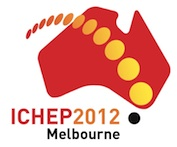Speaker
Ms
Francesca Bellini
(Universita e INFN & University of Bologna (IT))
Description
The ALICE experiment can benefit from its excellent particle identification capabilities to study hadron production in Pb-Pb collisions at \sqrt(s_NN) = 2.76 TeV, over a wide range of momenta. This allows one to probe different stages of the medium evolution. Transverse momentum spectra of identified particle and resonances characterize the bulk freeze-out properties and the dynamical evolution of the system. Results from hydrodynamics-motivated blast-wave model fits to the data are shown, while production yields and ratios are discussed from a thermodynamical point of view. Since the colliding nuclei have no net strangeness content, the study of strange and multi-strange particle production is an important probe of the early partonic stages of the collision. The enhancement of strangeness production in relativistic heavy-ion collisions relative to proton-induced reactions was one of the predicted signatures of the formation of the deconfined medium known as Quark-Gluon Plasma. ALICE results are presented. Moreover, high-pT particle production can be used to investigate the energy loss of the fast partons produced in early hard scatterings, while traversing the medium. To this purpose, measurements of the nuclear modification factor (R_AA) of identified particles have been performed and are discussed. Pb-Pb results are finally compared to measurements at lower energies and predictions for the LHC.
Author
Ms
Francesca Bellini
(Universita e INFN & University of Bologna (IT))
